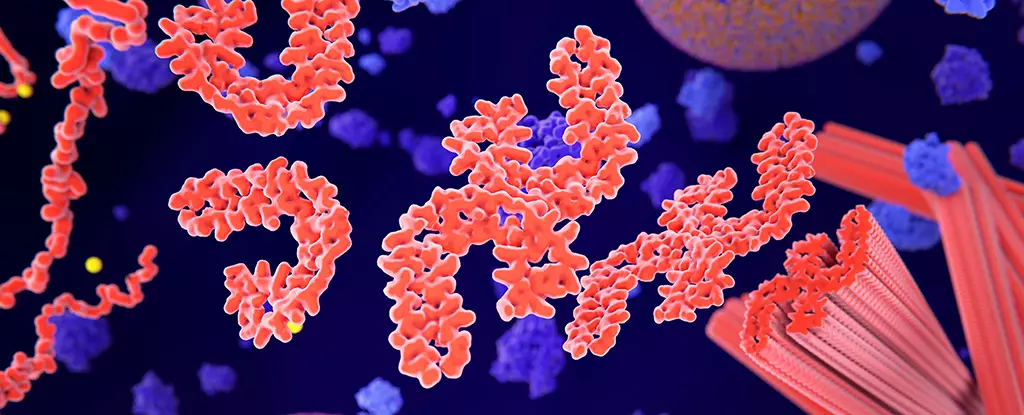Alzheimer’s disease continues to pose a significant challenge in modern medicine, affecting millions worldwide. Characterized by the presence of harmful protein deposits—specifically clumps and tangles—this neurodegenerative disorder severely disrupts neuronal function, ultimately leading to cognitive decline. The underlying mechanisms often involve the mismanagement of tau proteins, which, in healthy conditions, stabilize neuronal structures. However, in the presence of Alzheimer’s, these proteins become hyper-aggregated, forming tangled fibrils that compromise neuronal integrity. This stark contradiction highlights the urgent need for effective therapeutic interventions that can mitigate the progression of the disease.
The Innovative Approach of RI-AG03
Recent findings have introduced RI-AG03, a novel peptide inhibitor designed to target tau protein aggregation. This groundbreaking study, conducted by an international team of researchers, demonstrated remarkable results across both fruit fly models and human neuronal cells. In fruit flies, the application of RI-AG03 extended their lifespan by up to 35 percent, marking a significant milestone in the drug’s efficacy. The unique mechanism of action for RI-AG03 lies in its dual-targeting strategy, focusing on two particular hotspots within the tau protein structure that are crucial for clumping. It is this specificity that sets RI-AG03 apart from existing tau aggregation inhibitors, which often lack precision and result in undesirable side effects.
Neuroscientist Amritpal Mudher from the University of Southampton emphasized the importance of targeting these aggregation hotspots. The identified regions act akin to a zipper, initiating the clumping process that leads to the formation of toxic fibrils. RI-AG03 is the first drug to effectively inhibit these specific regions, allowing it to potentially halt the early stages of tau fibrillation. This pioneering strategy underscores the importance of precision medicine in neurodegenerative disease treatment—particularly for conditions as complex as Alzheimer’s. When drugs are meticulously designed to affect only pathological processes without disrupting normal protein functions, they hold the promise of achieving therapeutic success with minimized collateral damage.
The research surrounding RI-AG03 is still in nascent stages, but it provides a glimmer of hope for future Alzheimer’s treatments. The successful application of computational biology in its design has been a game changer in the field. By leveraging sophisticated algorithms and molecular simulations, researchers have tailored RI-AG03 to effectively bind to the tau protein without adversely impacting other critical cellular proteins. This targeted approach is vital in a complex system like the human brain, where unintended interactions can lead to harmful side effects.
According to neuroscientist Anthony Aggidis, RI-AG03’s specificity may pave the way for a new class of drugs that could counteract the progression of neurodegenerative diseases more effectively than current aggregation inhibitors. However, despite the promising results observed in preliminary tests, the road ahead remains rigorous. The next step involves testing the drug in mice, followed by extensive clinical trials to assess its safety and efficacy in humans.
Despite the enthusiasm surrounding RI-AG03, the history of tau-based therapeutic interventions has seen many fail to translate success from animal models to human applications. Previous drugs designed to address tau aggregation have often fallen short in providing tangible clinical benefits, raising questions about the complexities involved in neuropharmacology. Researchers remain hopeful that the unique properties of RI-AG03, coupled with carefully designed clinical studies, will ultimately lead to breakthroughs in Alzheimer’s treatment.
The development of RI-AG03 represents a significant advancement in the quest to combat Alzheimer’s disease. As research progresses, the potential implication of such therapeutics offers a beacon of hope for millions affected by this debilitating condition. While further testing is essential, the dual-targeting mechanism exhibited by RI-AG03 may herald a new era in the treatment landscape of neurodegenerative diseases, emphasizing the critical need for precision in drug design. Ultimately, the success of this approach could not only improve the quality of life for patients but could also illuminate pathways for addressing other complex neurological disorders.



Leave a Reply